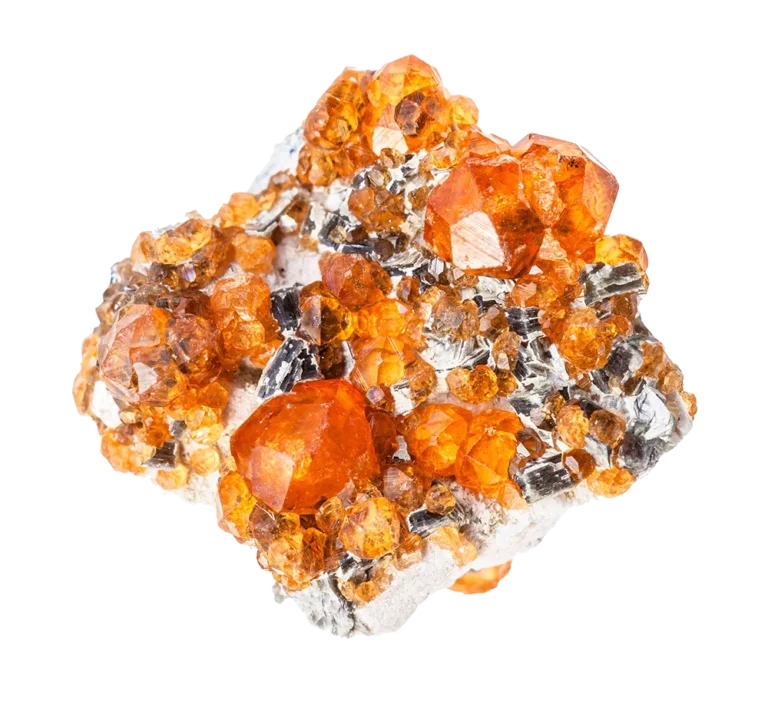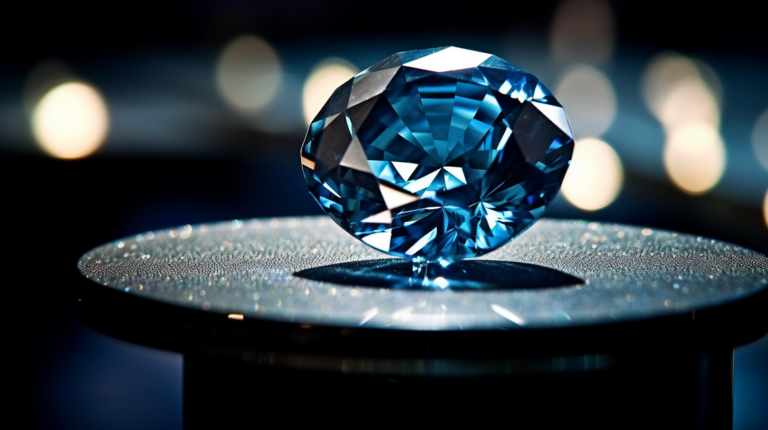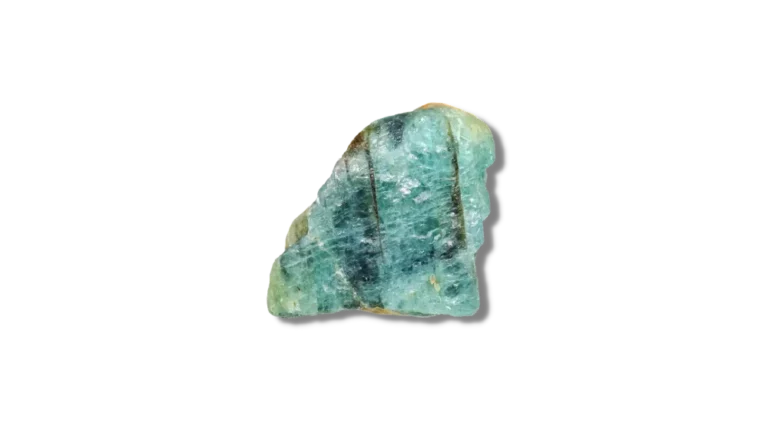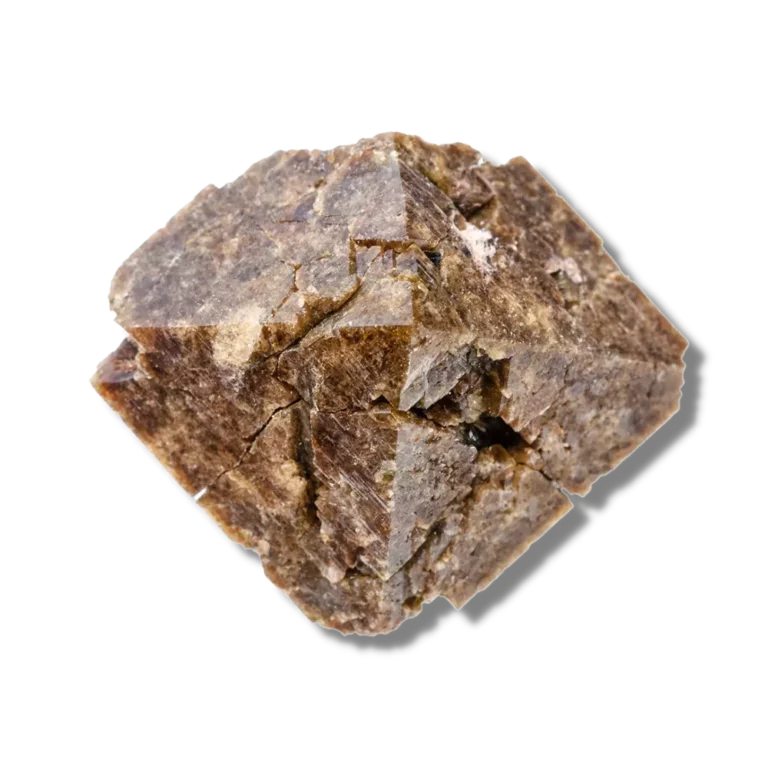Red Tourmaline: Properties, Benefits & Meanings
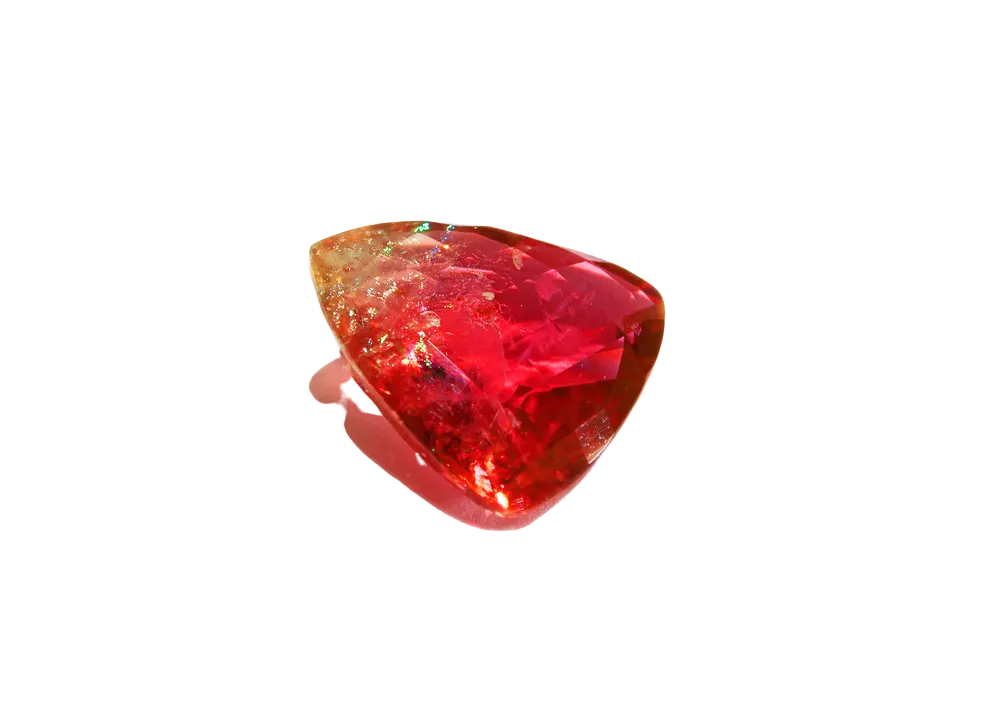
Red Tourmaline Overview
Red Tourmaline, also known as Rubellite Tourmaline, is a gem that symbolizes love and passion. This super gorgeous red-colored stone is a type of Elbaite, one variety in the Tourmaline family that can appear in any rainbow color.
Red Tourmaline is sometimes called Rubellite. The purplish-red variety of the gemstone, which gives its name to all red varieties of Tourmaline, is known as “Rubellite.”
This stunning gem resonates with the Root and Heart chakras and is most commonly worn in rings because of its attractive luster and vivid red color.
What Is Red Tourmaline?
Tourmaline belongs to a family of aluminum boron silicates mixed with iron, magnesium, or other various metals. Depending on the proportions of its components, it may form red, pink, yellow, brown, black, green, blue, or violet.
Prismatic, vertically striated crystals have been observed in a variety of shapes and sizes. Some may be long and slender while others are thick; they can either be uniformly colored or exhibit variation within their structure—such as being transparent on one end but opaque at another.
Tourmaline is mined on every continent, but fine crystals and precious stones are still considered rare and can be quite expensive.
What Does The Word Red Tourmaline Mean (Etymology)?
The name Tourmaline originates from the Sinhalese words turmali or turamali, which means “a mixed color precious stone” or “something small from the earth.”
Rubellite is derived from the Latin word rubellus, meaning “reddish.” Rubies are usually a redder color than most Rubellites—these gemstones are more often pink or violet-pink when compared to rubies’ rich ruby hue
Where Can You Find Red Tourmaline?
Notable deposits for Red Tourmaline include:

Africa is the prime zone for Red Tourmaline, and it is present here with the most abundance.
Appearance
It is a significant member of the Tourmaline family, and its hardness makes it suitable for use in jewelry. Red Tourmalines are often confused with Rubies due to their deep red coloration—however, they are non-metallic in appearance.
Red Tourmaline is known for its rich, deep color, ranging from a pale pink to an intense ruby red.
The color can vary from stone to stone and appears as a brilliant red in daylight. Red Tourmalines are typically transparent, but their transparency can range from translucent to opaque depending on the presence of impurities within the stone.
Physical Properties
| Mineral Group | Aluminum Boron Silicates |
| Formula | AD3G6 (T6O18)(BO3)3X3Z |
| Color | Red |
| Hardness (Mohs scale) | 7 – 7.5 |
| Refractive Index | 1.614 – 1.666 |
| Fracture | Sub-Conchoidal |
| Luster | Vitreous |
| Specific Gravity | 2.85 – 3.35 |
| Transparency | Transparent, Translucent |

Red Tourmaline Value
Price: The price and value of Red Tourmaline vary greatly depending on the size, quality, cut, and color of the individual gemstone. Since most red stones are included, eye-clean gems are especially valuable.
Red Tourmaline over 10 carats is a very sought-after gemstone and can reach $1,000 or more per carat (ct).
The Four Cs Criteria
Color is the most important determinant of value, with the deepest reds being considered the most valuable. The characteristic that makes Red Tourmaline so desirable is its deep color; it can range from a pale orange-red to a vibrant hue.
- Clarity: GIA groups gemstones into three categories: Type 1, which contains gems that rarely have inclusions; Type 2, with those that usually do; and Type 3—with almost always include them.
- Red Tourmaline is a Type 3 gem and can almost always be expected to have visible inclusions, but they are difficult for the naked eye—even under magnification—to see.
- Cut: Tourmaline is a gemstone found in various physical forms, and it can be economically cut into long rectangular shapes. However, rubellite tourmaline (often used in jewelry making) also comes as cushions or ovals—though gems are most commonly found shaped like rounds or emerald cuts.
- Carat Size: Red Tourmaline is most commonly found in smaller sizes (under 5 carats), with larger stones being rare.
How To Tell If Red Tourmaline Is Real?
You can determine the authenticity of a gemstone by examining it in many ways. A few of them are discussed below:
Check Color: A raw red tourmaline is said to be best, as it can retain its original deep red color.
- Scratch Test: To determine whether a stone is a real Tourmaline, try scratching it with a knife. If light marks are left on the gemstone’s surface, you are likely looking at just plain old quartz—not your precious crystal! However, if no scratches appear or only very fine ones remain, there’s a good chance that what you have is genuine.
- Inclusions: Tourmalines tend to have visible inclusions, meaning that if your stone looks clear and free of cracks or other imperfections, it isn’t a tourmaline.
- Shape: Most tourmaline crystals have either a triangular or hexagonal cross-section. If the stone you’re investigating has any other shape, chances are good that it isn’t natural Tourmaline.
- Fluorescence: An electronic gem tester or X-ray fluorescence machine can determine if a red tourmaline stone is authentic.
- Spectrometer: Another way to tell whether a stone is real or fake is by using an infrared spectrometer, which can detect any impurities in a gem.
- Ask an Expert: A gemologist must examine your stone to check its authenticity.
Red Tourmaline Chakra Connection
Red Tourmaline is associated with the Root chakra and the Heart chakra.
The Root Chakra:
It is the first chakra in your body. Located at the bottom of your spine, it represents a connection to Mother Earth and physical survival—two important aspects of well-being.
The other names of this chakra are the First chakra, Base chakra, or Muladhara in Sanskrit.
The Root Chakra is located in the perineum at the base of the spine. It is associated with survival instincts and security needs.
The Heart Chakra:
The Heart Chakra, present in the center of your chest, is associated with feelings of warmth and security. Balancing this chakra gives you peace within yourself and others around you.
When your heart chakra is in harmony, you are at peace with yourself and others. Your emotions become more balanced; instead of repressing them (or bottling them up), you can express yourself freely while respecting other people’s feelings.
When this chakra is not in harmony, you may feel disconnected from others and experience low self-esteem.
The heart chakra is called the fourth one, or Anahata in Sanskrit. It’s linked with air and the color green.
Red Tourmaline Meaning And Uses
This beautiful gemstone has several properties. Some of them are discussed below.
- Red Tourmaline helps us to make sound decisions about the food we eat, how much exercise is beneficial or needed, and anything else that impacts our daily health.
- If we suffer from any mental problem, Red Tourmaline highlights just how important mental health is. Therefore, just as a physical ailment may need expert help to heal, so can certain mental afflictions benefit from therapy or medications.
- Red Tourmaline is a powerful talisman for the physical heart, circulatory issues, and reproductive health concerns. Its positive energy helps us release our fears and embrace hope. It can help us view the world with a more empathetic, realistic perspective.
- Red Tourmaline is a stone of first love and renewed devotion after loss. It gives us the courage to open our hearts again after a loss. If someone has hurt us, Red Tourmaline helps us to forgive. Giving up anger and bitterness doesn’t make us weak—it makes us powerful.
- It encourages us to show off our friendly, charming nature. It helps us stay committed to each other while also allowing us to grow.
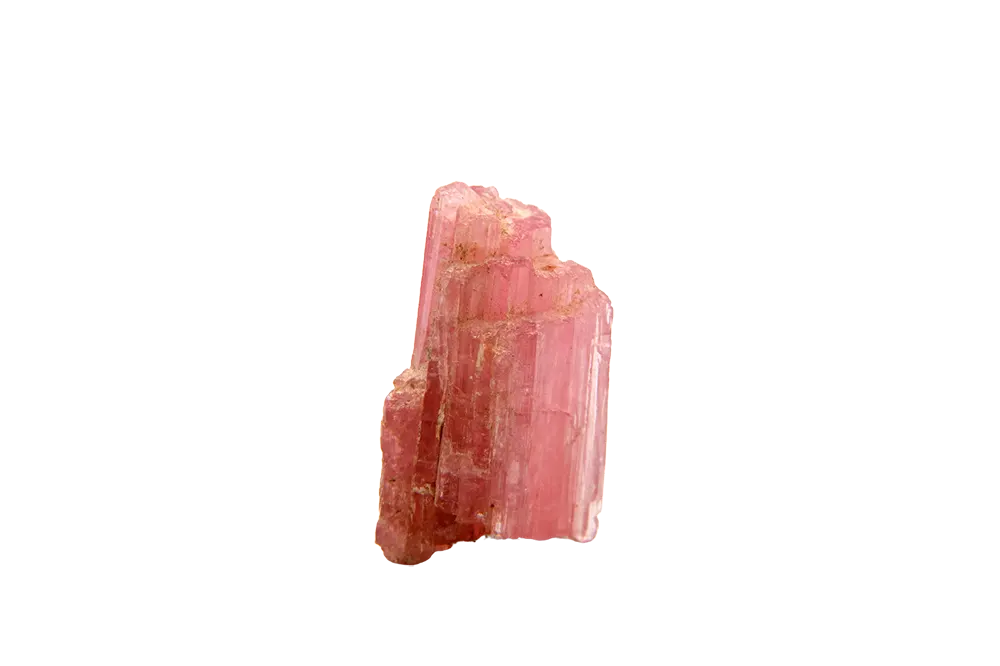
How To Clean Red Tourmaline Jewelry?
- Begin by immersing the jewelry in warm water and a mild detergent or cleaning solution.
- Next, clean your jewelry gently with a soft brush.
- A toothpick or matchstick makes a good tool for removing small accumulations, but be gentle.
- After scrubbing, dip the jewelry piece back into your cleaning solution for one last wetting. Then rinse it in warm running water—preferably at a temperature similar to the first step of your cleaning process.
- Blow or shake excess liquid off the jewelry piece, then polish it with a soft cloth.
- Many commercial jewelry cleaners are safe to use, but avoid those that contain ammonia or other substances likely to damage your gems.
- Here’s a jeweler’s trick to avoid liquid stains on precious metals: immerse the piece in a dry maple wood chips bed, then blow away when dry. It will be free of water spots.
FAQ
What Is Red Tourmaline Good For?
Red Tourmaline can be worn in jewelry, hung as an ornament, or included in crystal clusters. It is also said to help neutralize the harmful effects of microwaves, computers, and other electronic devices when placed near them.
Because of their durability, Tourmalines are highly valued in electronics. They can withstand high frequencies—such as those used for televisions and radios—without shattering as many crystals do.
What Are The Healing Properties Of Red Tourmaline?
Red Tourmaline is one of the best crystals for balancing and opening the Heart Chakra. It can help you get in touch with your emotions, and when used in meditation, it helps you to be more spiritual. This crystal is also said to be good for stress relief and helps with anxiety issues.
It also resonates with the Root Chakra and can help you connect with your emotions. It’s also a good protection stone; one can use it to clear negative energy from homes or offices. Red Tourmaline is often used to heal the heart chakra and bring love, serenity, and joy into one’s life. It is also said to alleviate stress and anxiety issues.
How Hard Is Red Tourmaline?
Tourmaline is a gemstone with a hardness of 7.0-7.5 on the MOHS scale, which means it isn’t as hard as diamonds or rubies but harder than most other gemstones. So, it is such a durable material that you can wear it in all types of jewelry without concern for damage or loss over time.
Which Gemstones Go Best With Red Tourmaline?
Red Tourmaline is a great stone to wear with other gemstones. For example, you can combine it with citrine or pink sapphire for maximum impact.
Red Tourmaline looks great when paired with yellow gold and white gold jewelry. It also works well with Black Tourmaline, Lepidolite, and Smoky Quartz.


